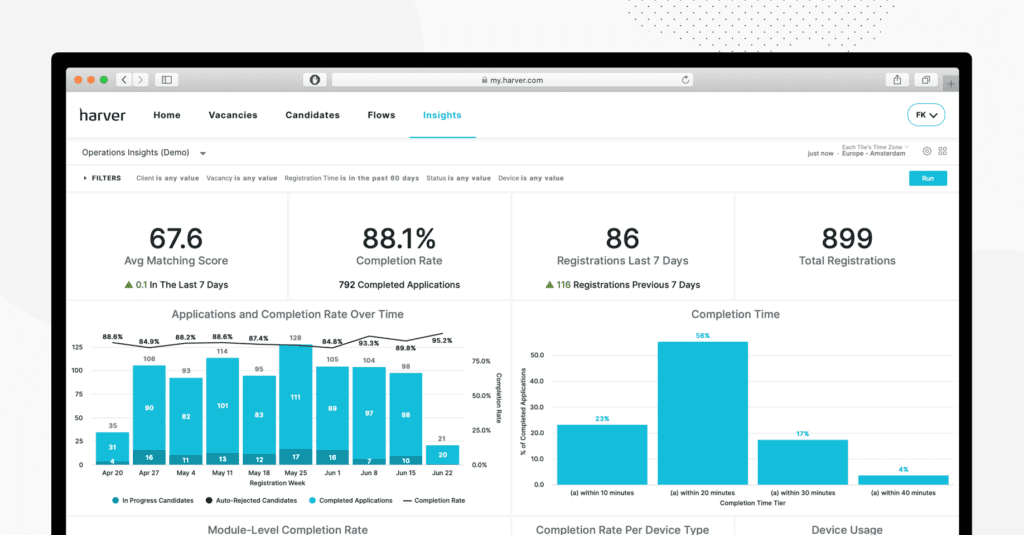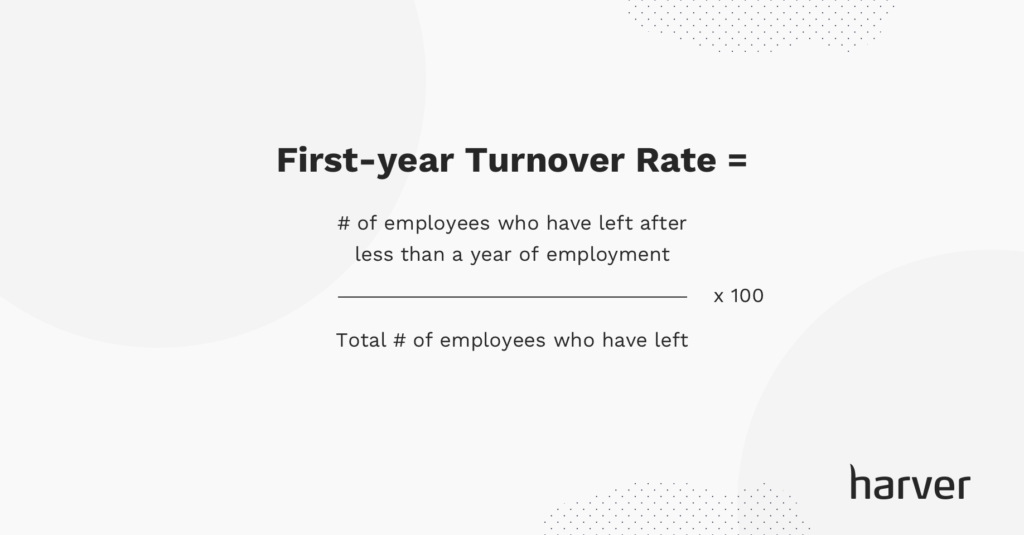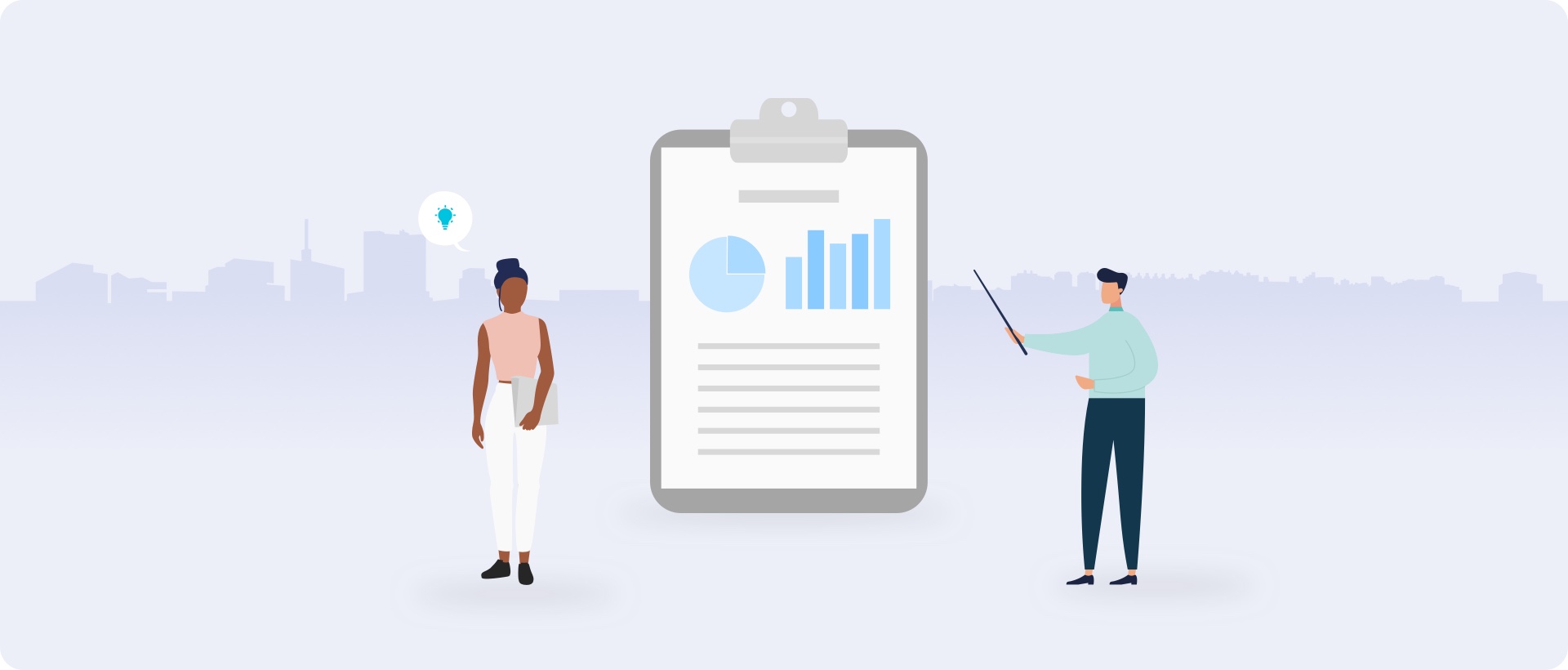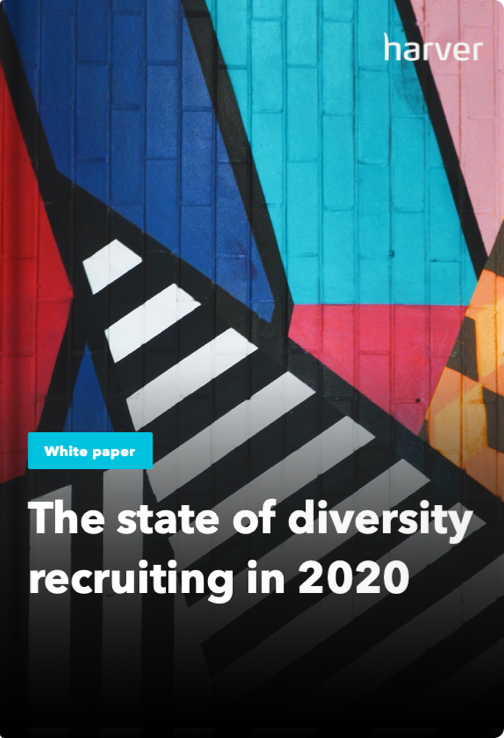This post was originally published in July 2020 and was last reviewed and updated on September 22, 2025.
From getting your job postings in front of the right people to interviewing qualified applicants and eventually onboarding the right hire, recruitment can be a big investment.
As with any significant time- and financial investment, you want to be sure your money and energy are going towards the right places–especially in a time when resources might be scarce due to the sudden economic downturn.
So how do you track your recruitment efforts? Let’s start with the basics.
What's in?
What are recruiting KPIs?
Recruiting KPIs are specific metrics that help you measure the effectiveness of your hiring process and your recruiting team. KPIs use data to provide insights into how close (or far) you are from reaching your recruiting goals and helps you make more strategic decisions about where to allocate your time and money.
While on the surface many KPIs just look like numbers, when analyzed in the context of your organization, you can better understand how you’re connecting with your target candidates and make the necessary adjustments to achieve your goals more efficiently.
Whenever you’re looking at your KPIs, make sure that you know what you’re comparing them to. You can have a look at recruiting benchmarks and/or compare your results with previous time periods, for example, month over month or year over year.
What are the most important recruiting KPIs to track?
There are a lot of recruiting KPIs you could track, depending on your objectives. For example, you might want to focus on sourcing data, to understand which channels bring in the best candidates, or on recruitment operations data, to understand how efficient your hiring process is. Or you might want to track candidate experience metrics such as candidate satisfaction, D&I metrics, and so on.

While you’ll want to choose KPIs based on your company’s recruiting and growth goals, these are some great ideas to get started.
1. Qualified candidates per opening
It’s always nice to have a lot of candidates apply to a job opening. After all, the more people that apply, the more choices you have for making a hire.
However, if those candidates aren’t qualified for the position, you’re only wasting your time. Not connecting with qualified candidates could be a sign that you’re not creating strong job listings or that you’re not posting them in the appropriate places. It may also tell you that you have unrealistic expectations about the type of candidate you’re trying to hire.
To help you identify if a larger issue is at play, you can track the ratio of qualified candidates per opening.
This KPI is pretty self-descriptive. Ratio of qualified candidates per opening tells you what share of people applying for each open position are actually qualified for that role. A good way to tell if a candidate is “qualified” is if you invite them to move beyond the first stage of your hiring process.
Tracking this KPI helps you identify if you’re reaching the right people from the beginning. If you find your ratio of qualified candidates is low, you might want to think of ways to re-do your job ads and better target your target audience.

12%
is the average applicants-to-interview ratio
Source: Jobvite
2. Application completion rate
It’s not uncommon to see applicants start to fill out a job application and then stop. People get busy or they self-eliminate and decide they’re not right for the position. But if your number of candidates abandoning an application before it is complete is high, you could be missing out on top talent.
High application abandonment rates could be a sign that your application process is too complicated. To find your application completion rate, take the number of submitted applications divided by the total number of candidates who started an application.
Another option is to use a recruitment analytics tool or a BI solution that collects data from your sourcing channels and tracks the most important metrics across the recruitment funnel. For example, the Harver BI solution provides a series of out-of-the-box recruitment dashboards that give you the big picture and help you understand your application completion rates and the reasons behind drop-offs with one click.
3. Source quality
When resources are already spread thin, you want to be sure you’re getting the most out of each process you implement. If you’re pulling applicants from a number of different sources like various job boards, Linkedin or referrals, you don’t want to waste your time on a source that isn’t giving you high-quality candidates.
Measuring source quality can help you ensure you’re only investing in the best sources for your recruitment process. This helps you build a healthy and reliable pipeline to improve your recruitment process as a whole.
To find source quality, take a look at the number of high-quality candidates coming from each source. Similar to identifying your number of qualified candidates, you want to look at where each high-quality candidate (or, the candidates who make it furthest in your recruitment process) is coming from.
Look for patterns. While there may be some outliers, you might be surprised to find that all of your best candidates are coming from the same source. For example, if you find out that your best candidates are from referrals, you might want to strengthen your employee referral program.

A data visualisation like this helps you see candidates from which sources have the highest application completion rate and which sources you hire most from.
4. Time to hire
Time to hire is the amount of time it takes to shortlist, interview, and hire a new employee from the moment they apply. It needs to include the entire process––not just after you’ve made your decision.

Time to Hire =
Day candidate accepted offer – Day candidate entered the pipeline
Source: Workable
Knowing how much time it takes you to hire a new employee can help you with forecasting and help you shape your entire recruitment strategy. If you know your hiring process typically takes two or three months, you’ll know when you need to start your recruitment campaign to get the new hire in at the right time.
When you can better plan for the amount of time you’ll need to find the right new employee, you can prevent your team from getting overwhelmed and ensure things are always running smoothly.
You can also uncover where the bottlenecks are in your hiring process, prepare strategies to eliminate them and reduce your time to hire.
And learn 15 ways to reduce your Time to Hire!
Learn the tactics top recruitment teams in your industry leverage to reduce Time to Hire. Stop losing candidates to competitors, improve your company’s bottom line revenue and candidate experience.
5. Quality of hire
When recruiting, you want to find the right candidate––not just anyone who will take the job. Measuring the quality of your hire tells you how successful you were in getting someone right for the job in your open position.
This KPI can be a little trickier to measure. Because quality is usually specific to your company and the goals you’re trying to achieve, you’ll need to define what “quality” means to you in a new hire.
You can look at factors like how long it takes to bring the employee to full productivity and how they fit in with the company culture, and/or at hiring manager satisfaction with the new hire. Looking at the employee’s complete position within the company can help you assess if you’ve hired the right person.
Although everyone is different and it can be hard to tell if an employee is the right fit before you bring them on, you can identify patterns between high-quality (or even low-quality) hires that let you know if someone is (or isn’t) right for your company. Based on that, you can adjust your selection criteria.
6. Cost per hire
Recruiting is always going to be an investment. But even so, you want to be sure you’re not spending more than you need and that your money is bringing in high-quality hires.
Keeping an eye on your cost per hire tells you the average amount of money you spent hiring someone new. It can help you make sure you’re not frivolously spending, but it also allows you to budget and plan if you have a big expansion coming up.
It’s important to look at your average cost per hire but look at each hire individually as well. Comparing this number to your average can help you identify if there are ways you can cut costs without sacrificing the quality of your hire, but also let you know if maybe investing a bit more money results in a stronger candidate.
Stop guessing,
Start data-driven hiring.
Learn how you implement a modern candidate selection process, that is: streamlined, experience-driven and backed by data.

7. Interviews to hire
Interviewing is one of the most complicated and time-consuming parts of recruiting, but it’s also crucial for getting the right hires on board. However, you want to be sure each interview is productive.
Knowing your interviews to hire tells you how many people you need to interview to eventually make an offer to one candidate. It can help you better understand how many applicants you need for each opening, and how many people you’ll need to invite to each interview round.
Because most companies have multiple interview rounds, you can also look at this ratio from one stage to the next. You might invite a handful of applicants to interview over the phone, then invite a smaller portion of that group for an in-person interview. Knowing how you progress through each interview phase can ensure you’re speaking with the right number of people at each stage.

An average number of interviews to make a hire dropped from 4 in 2016 to 2.5 in 2019. However, with the increased unemployment and spiking candidate volume in light of the COVID-19 pandemic, it is possible that the interviews-to-hire will go up again. Take it into consideration when tracking your KPIs.
8. Offer acceptance rate
Anytime we offer someone a job, we hope that they’ll accept. Unfortunately, this isn’t always the case. Recruitment is a two-way process and sometimes the candidate we give an offer to doesn’t accept the position.
While we can’t expect every candidate to accept, it would be a red flag if most weren’t taking the position. This could be a sign that you’ve done something wrong in your recruitment process, or that there are larger red flags about your company that you’ll want to resolve.
This is why offer acceptance rate should be one of the recruiting KPIs you track.
Offer acceptance rate is another self-descriptive KPI. It tells you how many offers are accepted. Just divide the number of offers accepted by the total number of offers extended.
Like what you see?
Don’t miss out. Subscribe to our quarterly digest to get the latest TA and TM resources delivered right to your inbox.
9. Candidate satisfaction
Having a great experience when interviewing with a company can leave a lasting impression. If candidates are satisfied, they will be more likely to want to accept an offer. It may even encourage them to apply to another open position if they don’t receive an offer.
You can measure candidate satisfaction by sending out a simple survey. Just asking your candidates if they’re having a positive or negative experience during the interview process can usually give you enough information to identify patterns and draw conclusions.
Try to keep your survey short. You can ask one or two yes or no questions and maybe include an open response where candidates can share thoughts and opinions if they’d like to contribute. You can then use this information to improve your candidate experience.
For example, in the Harver platform, every candidate receives a short survey at the end of the application process that measures their satisfaction.

10. First-year turnover rate
High company turnover is expensive for companies. After you’ve spent all this time and money investing in recruiting, you don’t want to have to turn around and do it all again.
A high turnover rate is also a bad sign for your company. It means that the hires you’ve brought onto your team aren’t happy in the position, and while once in a while it could just be a bad fit, high first-year turnover rate is a sign of a bigger problem, e.g. setting unrealistic job expectations or a toxic company culture.
You can calculate first-year turnover rate by dividing the number of employees who leave after less than a year of employment with the total number of employees who left. This lets you see how many people moving on from your company hadn’t been there for a full year.
If this number is high, you’ll want to take a closer look at your recruitment process, your onboarding process, or even overall company culture to see what you’re able to improve.

11. Hiring manager satisfaction
Just as it is important to measure how satisfied your candidates are with their interviewing and hiring process, you’ll want to measure how happy your hiring managers are with the employees you’ve brought on board.
When hiring managers are unhappy with the new hires, it could indicate that your selection criteria aren’t relevant to the roles or that the hiring managers aren’t invested enough in the recruitment process.
You can measure hiring manager satisfaction with a survey or a short interview. Because these are internal team members, you can get a bit more in-depth with the questions you ask.
Be sure to ask hiring managers what they believe you can do to improve. When you bring them in on the decision-making process, they can feel more fulfilled and like their ideas are heard.
12. Adverse impact
We always want to be aware of our biases when hiring a new team member. One great way to do this is by measuring adverse impact. Adverse impact lets you identify if there is a bias against a protected class, measuring if that protected class is hired at a less than 80% rate.
To find adverse impact, divide the applicant success rate of Group A (your protected class) by the applicant success rate of Group B (your non-protected class). This number can help you identify if you need to make your recruitment process more inclusive and diverse.
The state of diversity recruiting in 2020
Bonus tip
You can widen the KPIs you’re tracking depending on the initiatives you’re working on. For example, you can select some sourcing metrics, employer branding metrics, or recruitment marketing metrics to complement your general recruiting KPIs. This allows you to get an even better understanding of the effectiveness of your full recruitment funnel.
In the Harver platform, for example, such metrics can be easily visualized through a series of dashboards that can be customized for every client.

Over to you
Tracking KPIs can help you get the insights you need into your recruitment process to start making better decisions. When you understand how your decisions and behaviors impact your hiring results, you can find specific ways and activities to improve your processes and better achieve your recruiting goals.
If you’d like to learn more about the recruitment metrics that you can track in the Harver platform, and see what kind of insights you can extract from our dashboards, book a demo below.
Ready to transform your hiring process?



